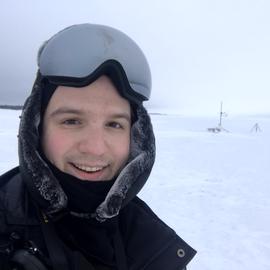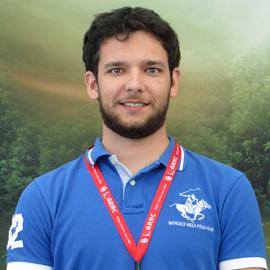Abstract
Obtaining thermodynamic measurements using rotary-wing unmanned aircraft systems (rwUAS) requires several considerations for mitigating biases from the aircraft and its environment. In this study, we focus on how the method of temperature sensor integration can impact the quality of its measurements. To minimize non-environmental heat sources and prevent any contamination coming from the rwUAS body, two configurations with different sensor placements are proposed for comparison. The first configuration consists of a custom quadcopter with temperature and humidity sensors placed below the propellers for aspiration. The second configuration incorporates the same quadcopter design with sensors instead shielded inside of an L-duct and aspirated by a ducted fan. Additionally, an autopilot algorithm was developed for these platforms to face them into the wind during flight for kinematic wind estimations. This study will utilize in situ rwUAS observations validated against tower-mounted reference instruments to examine how measurements are influenced both by the different configurations as well as the ambient environment. Results indicate that both methods of integration are valid but the below-propeller configuration is more susceptible to errors from solar radiation and heat from the body of the rwUAS.
Publication
Sensors, 19(6), 1470
Click the Cite button above to demo the feature to enable visitors to import publication metadata into their reference management software.

Scientist
Brian is a former graduate student from the BLISS team.

Research Engineer
My research centers around developing small unmanned aircraft systems for adaptive atmospheric sampling which involves CAD modeling, systems optimization, hardware and software integration, and control theory. I have led the design of the CopterSonde series of vehicles, which is used to perfrom controlled and targeted weather sampling at high temporal and spatial resolutions. I am also advising other projects in which sensor integration or new UAS are required.

Research Scientist
Tyler is a Research Scientist in CIWRO working on using ground-based remote sensors and WxUAS to advance the understanding of various boundary layer processes. He is acitvely exploring ways to optimally combine data collected from WxUAS and ground-based remote sensing.

Former Research Scientist
Elizabeth Pillar-Little was the Assistant Director for the former Center for Autonomous Sensing and Sampling at the University of Oklahoma, where she was responsible for coordinating the field deployments of RPAS teams from both an operational and scientific perspective. She also ensured the continuity of day-to-day center business and enjoyed spearheading outreach and science communication activities on behalf of the center. She was also appointed as a research scientist in the School of Meteorology and led the atmospheric chemistry research nucleus of CASS. Dr. Pillar-Little’s research interests were broadly centered around atmospheric and environmental chemistry, but she is very passionate about atmospheric composition, aerosol optical properties and composition, and the interplay between aerosols and convection initiation.